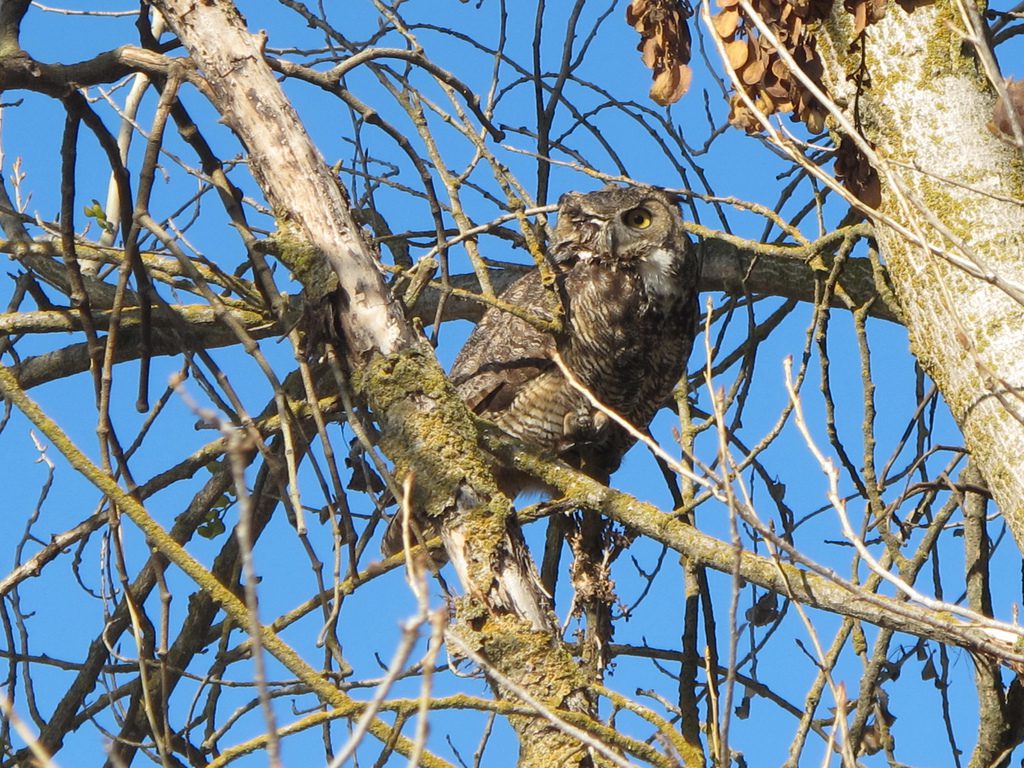Wednesday February 16, 2022

Winter mornings on the Stanislaus river are often cold and eerie as the winding river is hidden behind a thick layer of morning fog. The air is icy and silent except for the deep hooting of a pair of great-horned owls (Bubo virginianus) bouncing across the river. Here at FISHBIO, we appreciate their beautiful and powerful hoots serenading us while we work on the river. These owls use special calls to communicate as they select nesting sites during their breeding season, which extends from January through February. When great-horned owls pair up for the breeding season and prepare to create the next generation, they will locate nests in large tree cavities or take over an old red-tailed hawk nest. Unlike other raptors, owls do not build their own nests, but will sometimes add additions to a nest that they move into, such as warm down feathers or fur from a mammal. A pair will only nest, or brood, once per year, with an average of one to four eggs in the brood. The young will hatch after being incubated for 30–37 days. It’s up to the parents to provide enough food, protection, and care to their young to ensure the whole brood makes it to adulthood.
Once the eggs hatch, the baby owls are blind and helpless, with minimal down feathers to keep them warm. This is called the hatchling stage, and they rely completely on their parents for warmth, food, and protection. The female will stay on her nest while her partner works hard to bring back enough prey for her and the developing young. Teamwork is crucial to raise young owls, as the hatchlings are too defenseless to be left alone at this stage. Around 9 days old, the owls enter the nestling stage as they begin to open their eyes and continue to develop their vision for the next two weeks. In the following weeks, they also start to develop mature feathers that help to make them more independent. These feathers not only will eventually help them fly, but are also vital for the young owls to maintain their own body heat.
After five weeks of life, the owlets gain some coordination and advance to what is called the branching stage. In this stage, the owls discover how to move their awkward bodies as they practice hopping and perching on various branches around the nest. Once they have gathered enough courage and muscle strength by practicing on the branches the owls will attempt to fly at around 9-10 weeks as they reach the fledgling stage. Fledgling great-horned owls will stay with their parents for around four to five months while they learn the skills to successfully hunt and capture prey. This is an interesting “in between” stage for young of all bird species as they can fly somewhat, but are often uncoordinated and clumsy. During this time it’s normal to see young fully feathered birds hopping around on the ground. If you do, however, notice a bird with bald spots or mostly fluffy down feathers, it is still a nestling and too young to be on the ground. In that case, you should call your local certified wildlife care center for advice on what steps to take next.
